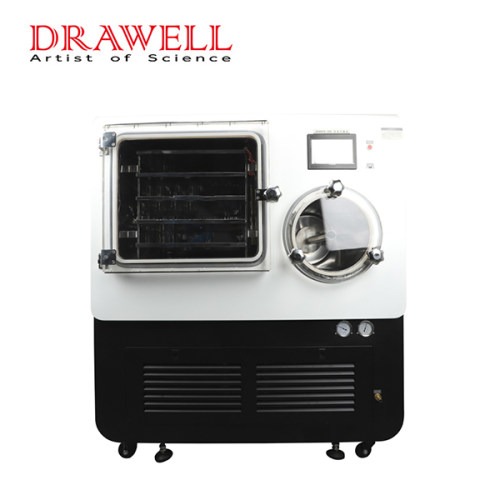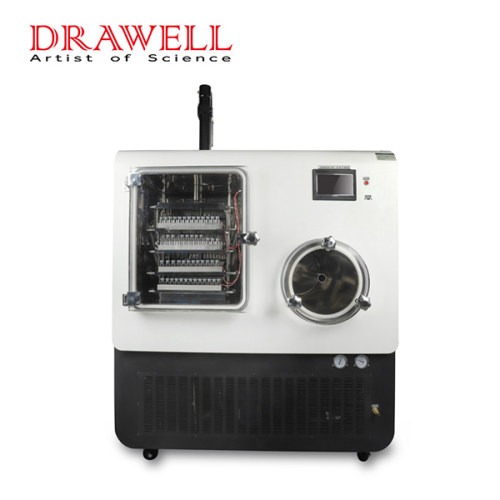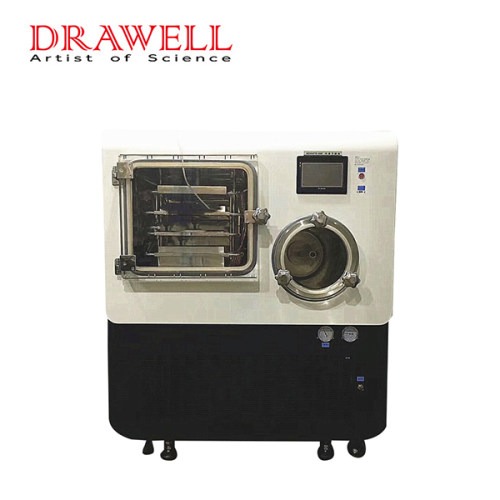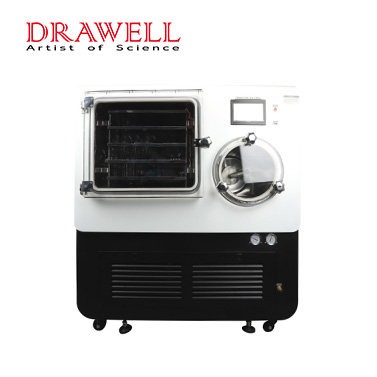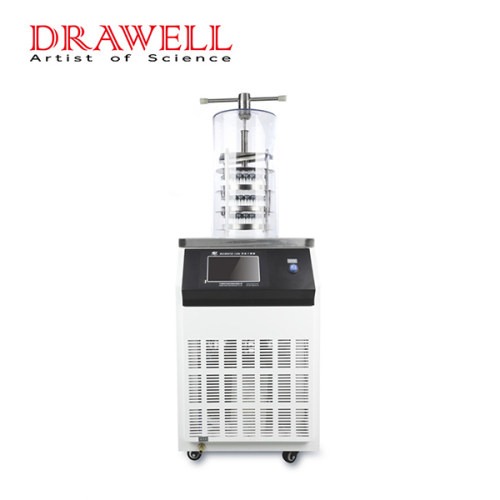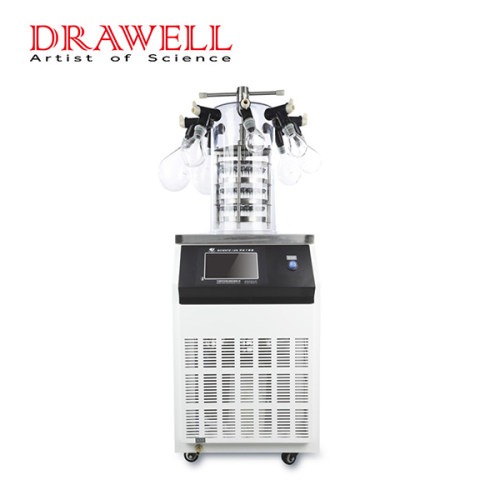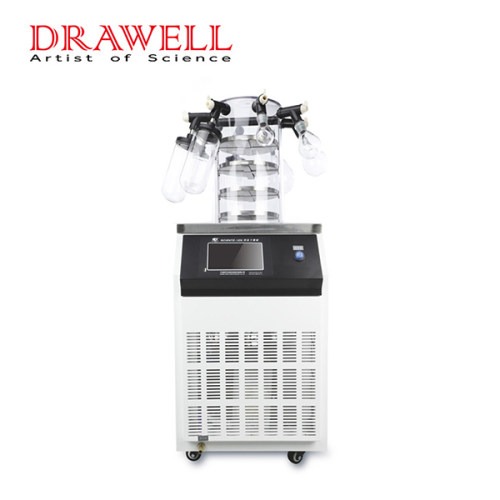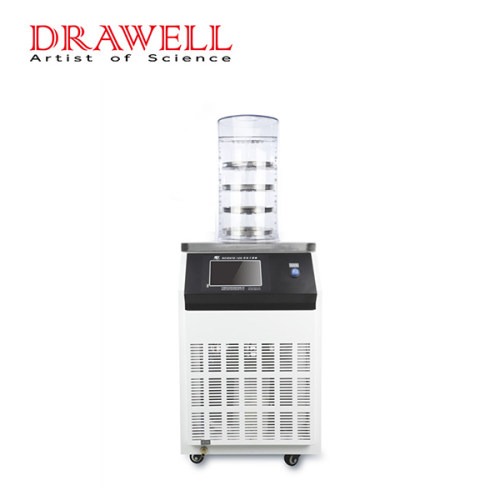At present, freeze-drying technology has been widely used in various fields such as medicine, biological products, food, active substances, and nanomaterials. Laboratory freeze dryers have been included in research and development and testing applications in colleges and universities, enterprise laboratories, experimental scientific research applications in bio-cosmetics, pharmaceuticals, and other industries, experimental research and development applications in food, medicinal materials, and other industries, and nanomaterials, chemical materials, and other industrial scientific research applications Experimental application.
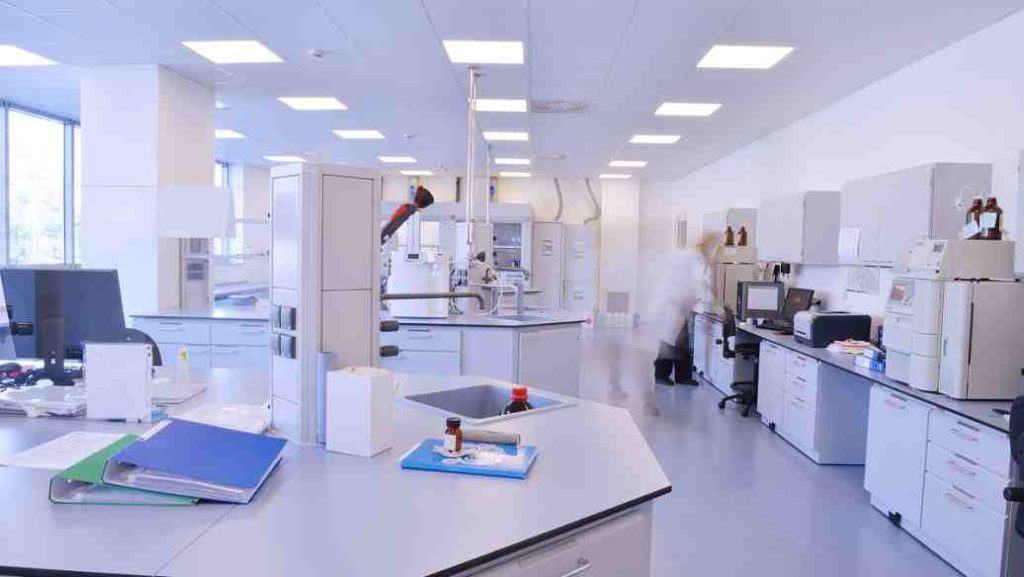
In the laboratory, we often need laboratory equipment called Laboratory Freeze Dryers. It can well help bioactive substances to restore the conformation and biological function before freeze-drying after redissolving. So, What is a freeze dryer? What are his characteristics?
What Is a Laboratory Freeze Dryer?
The basic principle of a freeze drying machine is freeze drying, also called drying, sublimation drying, or freeze-drying for short. It is one of the drying methods, the purpose is to store items.
The reason why items are damaged, rotten, and deteriorated is mainly caused by two factors: external and internal factors. The external factors are the effects of air, water, temperature, biology, etc.; If the effects of external factors and internal factors can be reduced to a minimum, the purpose of keeping items unchanged for a certain period can be achieved.
The drying method is to remove the moisture contained in the interior of the article because moisture is one of the necessary conditions for the growth of all living things. When the water content of the organism is reduced to a certain extent, the organism is not easy or unable to grow and reproduce. Therefore, it can be stored for a long time; in addition, when there is water, some acids and alkalis will dissolve in them and some chemical effects will occur to make the goods deteriorate.
Main Features of Laboratory Freeze Dryers
- Ordinary type: used for most materials, the materials are directly put into the material tray for freeze-drying.
- Gland type: When the material needs to be dried in the vial, it should not be exposed to the outside air after drying. After the material is dried, the vial is sealed under a vacuum.
- Multi-manifold type: When multiple varieties of materials are dried, they cannot affect each other and intersect each other. Multi-manifold type is required to facilitate observation and temporary sampling.
- Multi-manifold gland type: when there are many kinds of materials that need to be dried, and some of them need to be processed by vials and other kinds of materials, choose this dryer
- Small in-situ pre-freeze type: in-situ pre-freeze drying, one-button start, adjustable temperature, controllable production process, program operation prompt function, automatic control of the whole freeze-drying process, program mode, or vacuum mode can be selected.
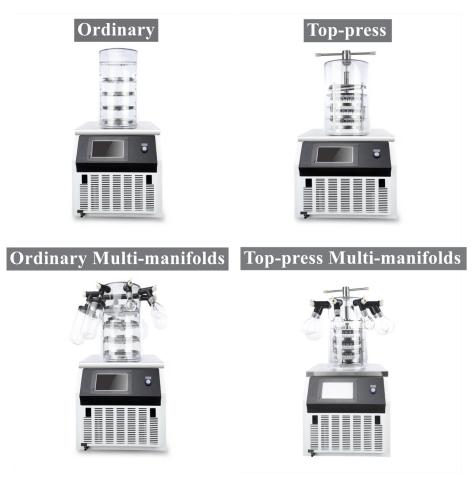
What Should We Do to Prepare Before We start Using the Freeze Dryer?
- Check whether the power supply voltage used by the freeze dryer is normal.
- Check whether the temperature measurement camera in the freeze-drying box is accurately placed.
- Check whether the vacuum pump oil in the mechanical pump of the freeze dryer meets the requirements of being clear and not thick and whether the oil quantity is negatively correlated with the oil mirror.
- Check whether the gate valve part in the ultrafiltration device meets all normal working standards, but all gate valves leading to the air should be closed.
- Check whether the defrosting water in the cold trap has been drained cleanly.
The Maintenance of the Laboratory Freeze Dryer
The use and maintenance of the laboratory freeze dryer must be strict to the requirements, especially the inspection and replacement of lubricating grease. The grease replacement cycle of a laboratory freeze dryer is affected by the temperature at the compression end. When the temperature at the compression end is high, the replacement cycle of the lubricating oil is appropriately shortened.
In general, the lubricating oil should be checked every 10000h of continuous operation. When the compressor is running for the first time. It is recommended to change the lubricating oil and clean the oil filter after 2000h of operation. Check whether the system is clean, if the system is in good operating condition, change the lubricating oil every 20000h. When checking and replacing the lubricating oil, avoid exposed air for a long time, because the freezer has water absorption.
After the laboratory freeze dryer fails, the cause must be thoroughly investigated, and if necessary, please ask a professional company to find and eliminate it.
If the motor of the laboratory freeze dryer burns out, impurities such as its patent skin will spread throughout the refrigeration system, and the system should be thoroughly cleaned during maintenance. The filtration system of the entire system should be thoroughly inspected and replaced if necessary. Improper handling will have adverse effects on the long-term operation of the compressor, and may even cause irreversible consequences due to small losses.
After the compressor is overhauled, the system should be dehumidified. It is recommended to pass dry nitrogen through the system for drying, and then perform vacuum treatment. The lower the vacuum degree, the more favorable the later operation of the system, and the higher the efficiency. Take it seriously when testing leaks and maintaining pressure. Most of the failures of refrigeration systems are rooted in leaks in the system.

